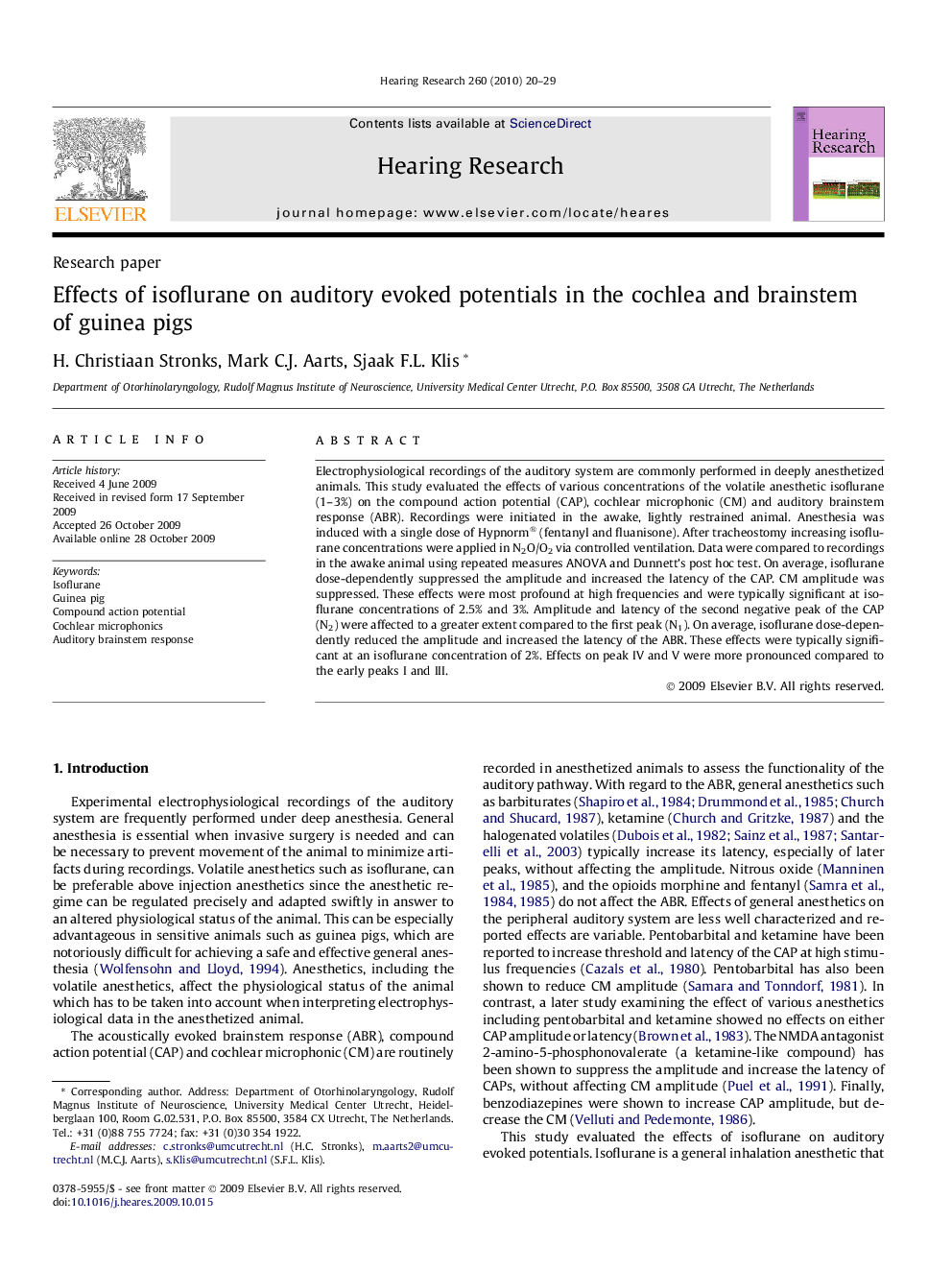| Article ID | Journal | Published Year | Pages | File Type |
|---|---|---|---|---|
| 4355692 | Hearing Research | 2010 | 10 Pages |
Abstract
Electrophysiological recordings of the auditory system are commonly performed in deeply anesthetized animals. This study evaluated the effects of various concentrations of the volatile anesthetic isoflurane (1-3%) on the compound action potential (CAP), cochlear microphonic (CM) and auditory brainstem response (ABR). Recordings were initiated in the awake, lightly restrained animal. Anesthesia was induced with a single dose of Hypnorm® (fentanyl and fluanisone). After tracheostomy increasing isoflurane concentrations were applied in N2O/O2 via controlled ventilation. Data were compared to recordings in the awake animal using repeated measures ANOVA and Dunnett's post hoc test. On average, isoflurane dose-dependently suppressed the amplitude and increased the latency of the CAP. CM amplitude was suppressed. These effects were most profound at high frequencies and were typically significant at isoflurane concentrations of 2.5% and 3%. Amplitude and latency of the second negative peak of the CAP (N2) were affected to a greater extent compared to the first peak (N1). On average, isoflurane dose-dependently reduced the amplitude and increased the latency of the ABR. These effects were typically significant at an isoflurane concentration of 2%. Effects on peak IV and V were more pronounced compared to the early peaks I and III.
Keywords
Related Topics
Life Sciences
Neuroscience
Sensory Systems
Authors
H. Christiaan Stronks, Mark C.J. Aarts, Sjaak F.L. Klis,
